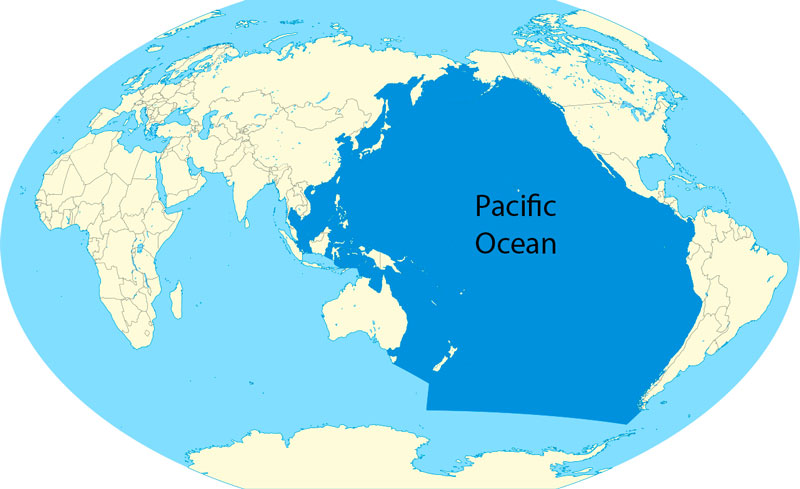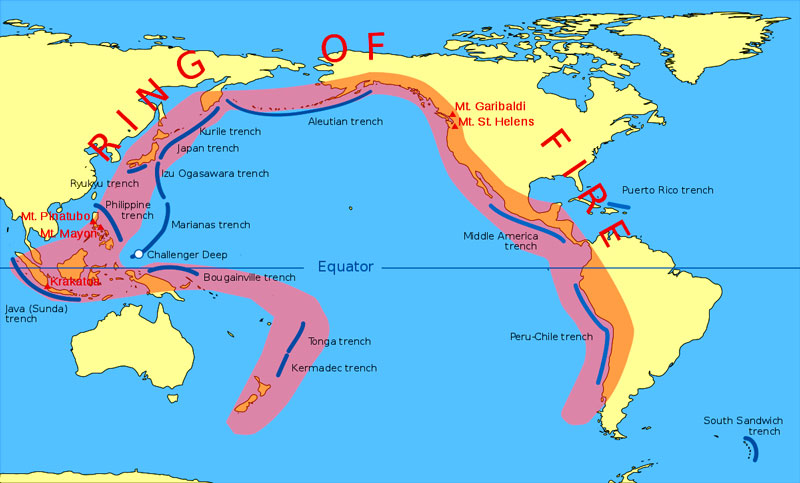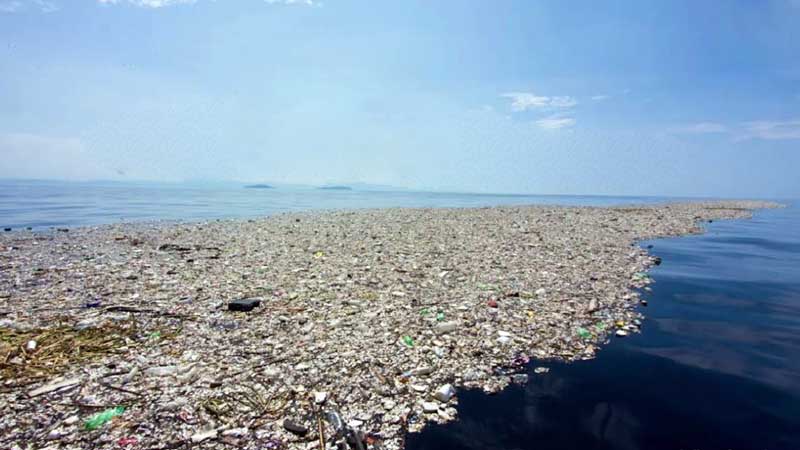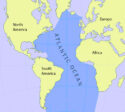 The Pacific Ocean is the largest and deepest among the five Major Oceans of the Earth. The surface area of the Pacific Ocean is so large that it can fit all seven continents. It covers around 30% surface area of the Earth while the remaining 70% is covered with all other oceans and continents. The continents that surround the Pacific Ocean are Asia, Austria, South American, and North America.
The Pacific Ocean is the largest and deepest among the five Major Oceans of the Earth. The surface area of the Pacific Ocean is so large that it can fit all seven continents. It covers around 30% surface area of the Earth while the remaining 70% is covered with all other oceans and continents. The continents that surround the Pacific Ocean are Asia, Austria, South American, and North America.
The name Pacific is derived from the Portuguese and Spanish word “Mar Pacifico”, which means a “peaceful sea”. This name was given by Ferdinand Magellan, who is a Portuguese explorer.
Characteristics
Temperature
The temperature gradient of the Pacific Ocean ranges from −1.4 °C to 30 °C. The surface temperature of the Pacific Ocean depends on the weather and location. The surface temperature is highest in equatorial regions and lowest near Polar Regions.
Salinity
The salinity of the Pacific Ocean is less than the Atlantic Ocean. Salt content is around 3.5% by mass which changes along the latitude. The salt content is lowest in equatorial regions nearly 3.2% by mass due to heavy rainfall.
Water Circulation
In the North Pacific Ocean, water moves in the clockwise direction, and in the South Pacific Ocean, water moves in the anti-clockwise direction.
Ring of Fire
 Ring of Fire, also known as Rim of Fire, is a ring-shaped region in the Pacific Ocean (highlighted in the above image) in which most of the volcanoes are located. These volcanoes are located on islands, along the coast of countries, and submerged in the Ocean. Many volcanoes in the Ring of Fire are active that is where the name came from. Furthermore, 90% of all Earth Quakes happen alongside the Ring of Fire due to volcanic activities.
Ring of Fire, also known as Rim of Fire, is a ring-shaped region in the Pacific Ocean (highlighted in the above image) in which most of the volcanoes are located. These volcanoes are located on islands, along the coast of countries, and submerged in the Ocean. Many volcanoes in the Ring of Fire are active that is where the name came from. Furthermore, 90% of all Earth Quakes happen alongside the Ring of Fire due to volcanic activities.
Great Barrier Reef
 Great Barrier Reef is the world’s largest coral reef system that stretches 2,300 kilometers long. Coral reefs are structures that are formed by corals (species of marine creatures) with calcium carbonate which they excrete. Reefs formation also contains rocks and sand.
Great Barrier Reef is the world’s largest coral reef system that stretches 2,300 kilometers long. Coral reefs are structures that are formed by corals (species of marine creatures) with calcium carbonate which they excrete. Reefs formation also contains rocks and sand.
Great Barrier Reef is placed in the World Heritage Sites because it is an important site for all humans worldwide. It is located in Australia and covers an area of 348,700 km².
Garbage Patches in the Pacific Ocean
 Garbage thrown by humans is not only polluting the land, lakes, ponds, and river. But, it is also polluting the oceans. The Pacific Ocean has few patches or regions of floating plastic garbage that cover an area of two times the size of Texas. These garbage patches were first discovered in 1997, since then they have grown rapidly in size.
Garbage thrown by humans is not only polluting the land, lakes, ponds, and river. But, it is also polluting the oceans. The Pacific Ocean has few patches or regions of floating plastic garbage that cover an area of two times the size of Texas. These garbage patches were first discovered in 1997, since then they have grown rapidly in size.
Garbage patches were formed in the Pacific Ocean due to the system of water currents that gathered plastic from around the Pacific Ocean. The garbage patches are very harmful to marine life, they cause the marine animal to die from suffocation when they tangle in plastics or eat them.
Interesting Facts
- The Pacific Ocean contains around 25,000 islands and most of them are located in the South Pacific Ocean.
- The Mariana Trench is the deepest place of the planet Earth which is located in the Pacific Ocean at the depth of 11,034 meters.
- Pacific Ocean islands are divided into three categories; Micronesia, Melanesia, Polynesia.

